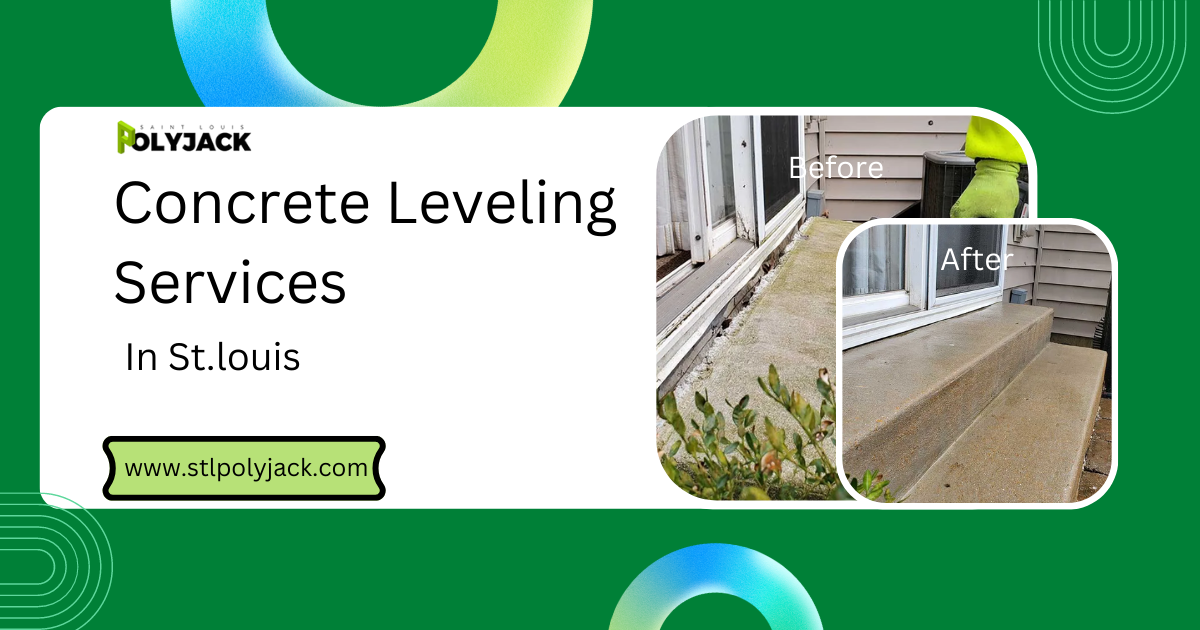Concrete is one of the most durable and widely used materials in construction, but it’s not invincible. Weather conditions can significantly impact the integrity and longevity of concrete structures. Whether you’re dealing with driveways, sidewalks, or foundations, understanding how weather affects concrete is crucial, especially in regions like St. Louis, where seasonal changes can be extreme. This blog will explore the effects of various weather conditions on concrete and provide practical solutions, including the importance of Concrete Leveling in St. Louis.
1. The Impact of Temperature Fluctuations on Concrete
Temperature changes are one of the most significant factors affecting concrete. In areas like St. Louis, where temperatures can swing from hot summers to freezing winters, these fluctuations can lead to several issues:
-
Thermal Expansion and Contraction: Concrete expands in hot weather and contracts in cold weather. Over time, these movements can cause cracks, especially if the concrete is not properly jointed or reinforced. These cracks can allow water to penetrate, leading to further damage when the water freezes and expands.
-
Freeze-Thaw Cycles: During winter, water can seep into cracks and pores in the concrete. When the temperature drops below freezing, the water turns to ice, expands, and causes the concrete to crack or spall. Repeated freeze-thaw cycles can severely weaken concrete surfaces.
What to Do About It:
-
Use Air-Entrained Concrete: Air-entrained concrete contains tiny air bubbles that provide space for water to expand when it freezes, reducing the risk of damage from freeze-thaw cycles.
-
Seal Cracks Early: Regularly inspect your concrete surfaces for cracks and seal them promptly to prevent water from penetrating and causing further damage.
-
Consider Concrete Leveling: If your concrete surfaces become uneven due to temperature fluctuations, concrete leveling in St. Louis can restore them to their original level, preventing water pooling and further deterioration.
2. Effects of Moisture and Humidity on Concrete
Moisture is another significant factor that affects concrete, particularly in humid climates or areas with heavy rainfall. St. Louis, known for its humid summers, can experience the following moisture-related issues:
-
Water Penetration: Prolonged exposure to moisture can lead to water penetrating the concrete, which weakens its structure and can cause issues like mold growth, corrosion of embedded steel (rebar), and efflorescence (white powdery residue).
-
Alkali-Silica Reaction (ASR): This reaction occurs when moisture reacts with the alkaline cement and silica in the aggregates, leading to expansion and cracking of the concrete. ASR is more likely to occur in humid conditions and can severely compromise the structural integrity of the concrete.
What to Do About It:
-
Apply a Waterproof Sealer: Applying a waterproof sealer to your concrete surfaces can help prevent water penetration and protect against moisture-related damage.
-
Improve Drainage: Ensure that your concrete surfaces have proper drainage to prevent water from pooling and seeping into the concrete.
-
Regular Maintenance: Regularly check your concrete for signs of moisture-related damage and address any issues immediately to prevent further deterioration.
3. The Role of Sunlight and UV Exposure
Sunlight, particularly UV exposure, can also affect the durability of concrete, though its impact is often overlooked. In hot climates or during the summer months in St. Louis, prolonged exposure to sunlight can lead to:
-
Surface Drying and Cracking: UV rays can cause the surface of the concrete to dry out too quickly, leading to surface cracks and reduced durability.
-
Color Fading: Decorative concrete, such as stamped or colored concrete, can fade over time due to prolonged exposure to sunlight and UV rays, affecting the aesthetic appeal of the surface.
What to Do About It:
-
Use UV-Resistant Sealers: Applying a UV-resistant sealer can help protect your concrete surfaces from the harmful effects of sunlight, preventing cracking and color fading.
-
Shade Structures: Where possible, consider installing shade structures or using landscaping to provide shade and reduce direct sunlight exposure on concrete surfaces.
4. Dealing with Snow and Ice
Winter in St. Louis brings snow and ice, which can be particularly harsh on concrete surfaces. The use of de-icing salts and the weight of snow can exacerbate existing issues or create new problems:
-
Salt Damage: De-icing salts can be corrosive and lead to surface scaling and damage to the concrete. They can also increase the freeze-thaw damage by allowing more water to penetrate the concrete.
-
Weight of Snow: Heavy snow can place additional stress on concrete structures, particularly if they are already weakened by cracks or other damage.
What to Do About It:
-
Use Safe De-Icing Products: Opt for de-icing products that are safe for concrete, such as calcium magnesium acetate (CMA), which is less corrosive than traditional salts.
-
Regular Snow Removal: Regularly remove snow from concrete surfaces to reduce the load and prevent water accumulation from melting snow, which can lead to freeze-thaw damage.
-
Concrete Leveling: If your concrete surfaces have become uneven due to freeze-thaw cycles or other factors, concrete leveling in St. Louis is an effective solution to restore them and prevent further damage from snow and ice.
Conclusion
Weather conditions can have a significant impact on concrete, leading to a range of issues from cracking and spalling to moisture penetration and UV damage. Understanding these effects and taking proactive measures can help you protect your concrete surfaces and extend their lifespan. Whether it’s applying sealers, improving drainage, or considering Concrete Leveling in St. Louis, addressing weather-related concerns is essential to maintaining the integrity and appearance of your concrete structures. By staying vigilant and performing regular maintenance, you can ensure that your concrete withstands the challenges posed by the ever-changing weather.




